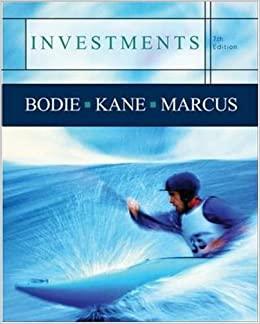Question
**Help with how to set up for following portfolio management project ** Data is from monthly retruns from 2008 - 2023 I need formulas and
**Help with how to set up for following portfolio management project**
Data is from monthly retruns from 2008 - 2023
I need formulas and how to calculate the following:
you will use the IN-SAMPLE and OUT-OF_SAMPLE period of RAW returns for all funds and risk factors.
In the second part of the project, you are going to investigate portfolio construction by creating portfolios.
There are a variety of portfolio construction techniques available. They all, in one way or another, focus on the goals of maximizing return and minimizing risk. In this project, you will implement a Mean/Variance optimization and Risk Parity optimization, create a Mean Variance policy portfolio and assess the performance of the resulting portfolios relative to a nave equal weighted portfolio. In addition, you will investigate the effectiveness of a risk mitigation technique by applying a CPPI methodology on the equal weighted portfolio.
In order to avoid the possibility of data mining, we typically use in- and out-of-sample periods in optimization exercises. That is, we optimize the portfolio using one period (in sample = 1/31/2000 to 12/31/2009) and test the performance of the portfolio using the following (non-overlapping) period (out-of-sample = 1/1/2010 to 9/30/2018).
PORTFOLIOS:
EQUAL WEIGHTED PORTFOLIOS
We will begin by constructing an equal weighted portfolio OUT OF SAMPLE.
MEAN/VARIANCE and EQUAL WEIGHTED PORTFOLIOS
Then we construct an optimized Modern Portfolio Theory portfolio using simple mean/variance optimization. Take the IN SAMPLE period and optimize your portfolio with minimum/maximum weight restrictions by maximizing the portfolio Sharpe ratio. You will select the restrictions for each optimization to ensure that you have a reasonably diversified portfolio (not too much weight in any single asset or asset class see below) that has loose enough restrictions to make the optimization meaningful (if restrictions are too tight the portfolio will be forced into an equal or near equal weighting).
We will use the following restrictions:
- No short exposures.
- We will restrict the maximum exposure to any one fund to 5% of the portfolio.
- We want to ensure that each of the categories has an exposure of at least 1% of the portfolio.
- Ensure that Miscellaneous are no more than 25% of the portfolio.
- We want to ensure that no category has more than 75% exposure.
Once we have established the ideal weights using solver to generate the mean/variance optimized portfolio, we will:
- Take these optimized portfolio weights and apply them to the out-of-sample data to create a return time series for the optimized portfolio out of sample.
- Calculate the returns to an equal weighted portfolio over the same period
RISK PARITY PORTFOLIO
We will also create a Risk Parity Portfolio selecting weights IN SAMPLE. The risk parity portfolio will be constructed in a similar manner to the MV optimized portfolio except that we will be setting the weights of each fund such that their marginal contribution to the risk of the portfolio will be equal. Unlike the MV optimization, we will not restrict the weight of the individual categories or individual funds.
RISK MANAGED PORTFOLIO INSURANCE PORTFOLIO
We will also create a CPPI risk managed portfolio. We will take the out-of-sample Equal Weighted Portfolio as the active/risky asset and the risk free rate (TBill) as the reserve/risk free asset. We will start off with a $1 million portfolio and use a fixed floor of $800,000 and a multiple of 2.5. The floor will not grow, the portfolios will be rebalanced monthly and we will not use a trading threshold, we will simply rebalance each month regardless of the size of the move over the month.
POLICY PORTFOLIO
We will also create a policy weight portfolio. We will take the category weights of the MV portfolio and apply these to representative ETFs of your choosing OUT OF SAMPLE.
Compare performance of these FIVE portfolios (MV, Risk Parity, EW, EW CPPI, Policy) in the out-of-sample period using the following summary statistics:
- Annualized rate of return
- Annualized Standard Deviation
- Equity Beta (multiivariate)
- TERM Beta (multiivariate)
- DEFAULT Beta (multiivariate)
- VOLATILITY Beta (multiivariate)
- Alpha (using our 4 factor model)
- Sharpe ratio
- Correlation with S&P500
- Maximum Drawdown
- ALSO create a Growth of $100 cumulative growth graph that graphs all 5 portfolios together
Step by Step Solution
There are 3 Steps involved in it
Step: 1

Get Instant Access to Expert-Tailored Solutions
See step-by-step solutions with expert insights and AI powered tools for academic success
Step: 2

Step: 3

Ace Your Homework with AI
Get the answers you need in no time with our AI-driven, step-by-step assistance
Get Started


